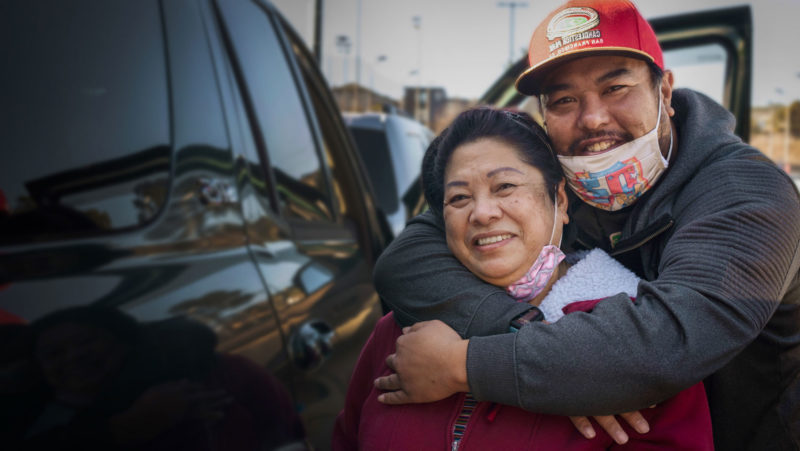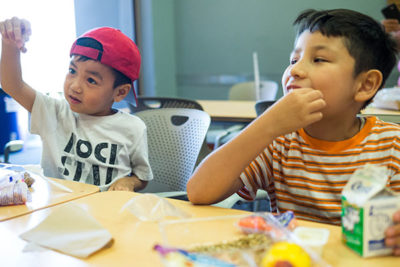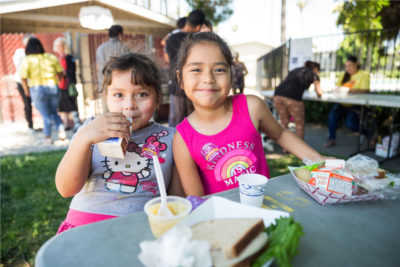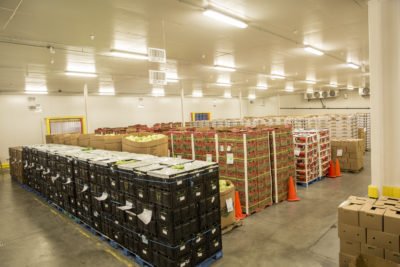Second Harvest randomly sampled 6000 households receiving free groceries at distributions in Santa Clara and San Mateo counties
SAN JOSE, Calif., April 20, 2021—Though the rollout of a vaccine brings hope and the prospect of an economic recovery for many in the Bay Area, a recent survey conducted by Second Harvest of Silicon Valley revealed that it won’t immediately change much for the families who have been devastated by job loss, a reduction of wages and the depletion of what little savings they had in the last year.
In a random sample of 6,000 households receiving free groceries during the pandemic at Second Harvest’s distributions in Santa Clara and San Mateo counties, respondents revealed the depth of impact the economic downturn has had on low-income households and that the financial implications of the crisis are far from over:
- 50% of the respondents indicated that they have had to delay paying their rent or mortgage during the pandemic
- 57% of survey respondents reported they have less than $100 in savings right now
- More than 70% of respondents indicated that someone in their household had lost a job and/or experienced a reduction in their work hours since shelter-in place started in March 2020
- Of those who have remained employed, 70% identified as essential workers, which means they’ve been working outside the home in health care, food service, janitorial and retail jobs to support our community’s access to basic needs
“The data speaks to how the pandemic has disproportionately impacted low-wage workers and why it will take a considerable amount of time for our community to recover,” said Leslie Bacho, CEO of Second Harvest. “As people return to work and the health impact of the pandemic comes under control, there will be many people in our community facing the consequences of a year without steady income along with delayed rent or mortgage payments coming due, and the reality of having to pay other bills that have piled up during this time. These are all obstacles that can significantly delay financial solvency for low-income, low-wage workers.”
The struggle to pay for housing, food, and emergency expenses is not new for many low-wage, hourly workers in Silicon Valley who were already living paycheck to paycheck before the pandemic hit. Even when the economy was strong in 2019, the Federal Reserve reported that 38% of Americans could not cover a $400 emergency expense and even fewer had three months of emergency savings to cover expenses in the event of a job loss. Locally, a year long study of poverty in the Bay Area published in May 2020 by UC Berkeley and Tipping Point Community found that 40% of Bay Area residents surveyed did not have three months of savings, and that 1 in 5 had less than $400 in savings for an emergency.
“It will be extremely difficult for families who have lost jobs or who have been living on reduced incomes to save enough money to pay overdue rent and bills,” said Bacho. “Because food budgets are flexible, they are often the first thing to go when finances are tight. We want people to know Second Harvest is here to ensure they don’t have choose between providing nutritious food to their families and another necessities.”
Since the pandemic began, Second Harvest has been serving 500,000 people a month at more than 900 distribution sites located in neighborhoods throughout Santa Clara and San Mateo counties, which is double the number of clients who needed support pre-pandemic. Even with the elevated level of need, the food bank has kept its focus on providing a nutritious mix of food including almost 50% fresh produce and 25% protein, which has helped offset the higher prices
for groceries during the pandemic.
Resilience in the face of uncertainty
For clients like Andy Cuevas – a veteran, student and father of two who lost his job during the pandemic – receiving nutritious groceries from Second Harvest helped alleviate stress for his family. It also provided an outlet for helping others in the community; Cuevas now regularly volunteers at a Second Harvest free grocery distribution at College of San Mateo. “People started hearing about me volunteering and started feeling comfortable asking me if anyone could come receive food,” said Cuevas. “I began referring families to the distribution. A lot of the parents – blue collar parents, low-income parents – were hit by [by the impact of] COVID.”
When the pandemic began, half of the people Second Harvest was serving had never received food assistance before. For many people, reaching out for help can be extremely difficult as they struggle with the stigma of needing assistance. “We see over and over that people are doing everything they can to hold on. Parents are hustling, trying to find new sources of income or moving in with other family members to keep their children fed and housed,” said Bacho. “The economics are colliding with the stress of the pandemic. I want to encourage people not to delay getting help if they need it.”
실리콘밸리의 세컨드 하베스트(Second Harvest of Silicon Valley)에 대하여
1974년에 설립된 Second Harvest of Silicon Valley는 미국 최대 규모의 푸드 뱅크 중 하나이며 지역 기아 종식에 있어 신뢰받는 비영리 리더입니다. 이 조직은 산타클라라 및 산마테오 카운티 전역의 900개 이상의 장소에서 약 400명의 파트너 네트워크를 통해 영양가 있는 식품을 배포합니다. 실리콘 밸리의 엄청나게 비싼 생활비와 팬데믹 시대 정부 지원의 급격한 감소로 인해 Second Harvest는 매달 평균 약 500,000명에게 서비스를 제공하고 있습니다. Second Harvest는 또한 사람들을 연방 영양 프로그램 및 기타 식량 자원에 연결하고 지역, 주 및 국가 차원의 기아 방지 정책을 옹호합니다. Second Harvest가 실리콘 밸리의 엄청난 수요에 어떻게 대응하고 있는지 자세히 알아보려면 shfb.org를 방문하세요.
실리콘밸리의 기아 문제를 취재하신다면, 현지 상황에 대해 이야기할 수 있는 전문 대변인을 제공해 드릴 수 있습니다.
다음 주소로 Diane Baker Hayward에게 문의하세요. dbakerhayward@shfb.org 또는 408-266-8866, 내선 368.



